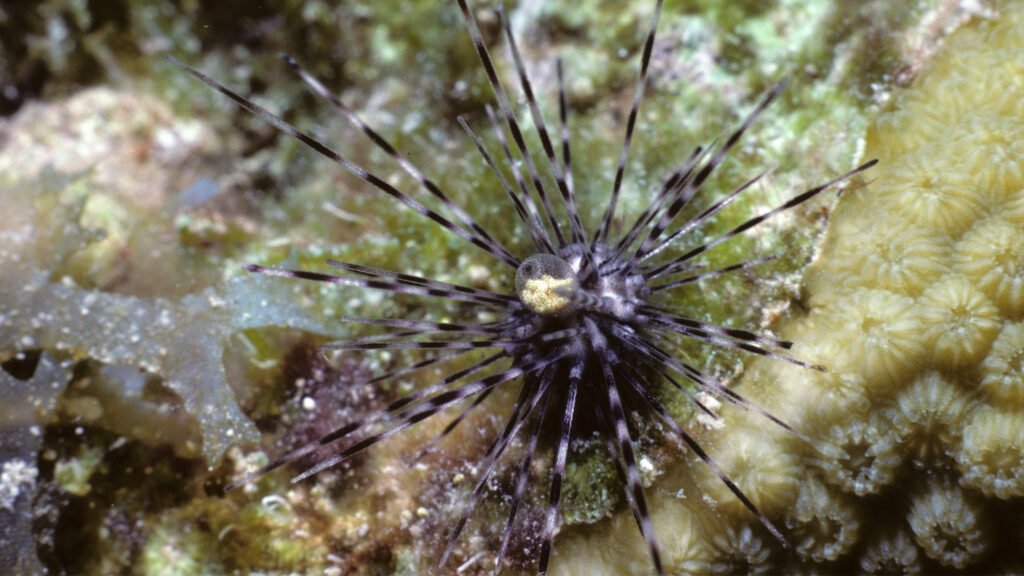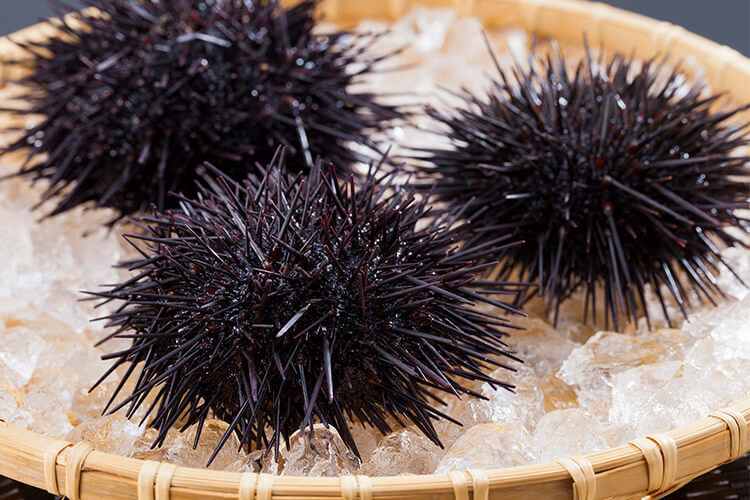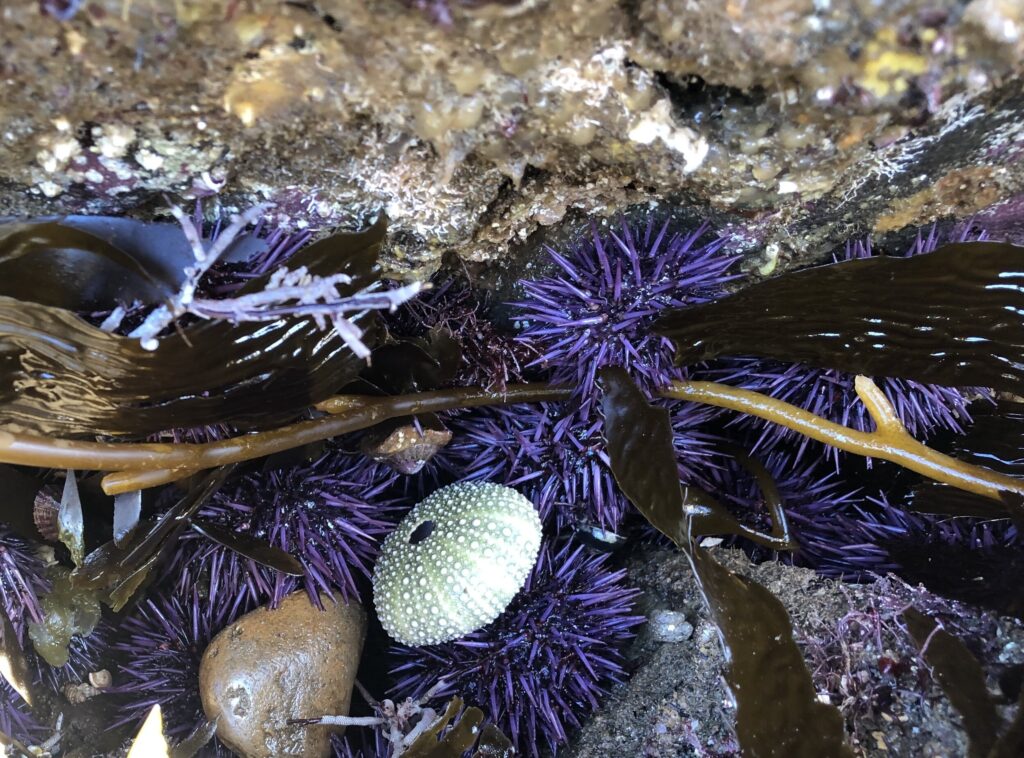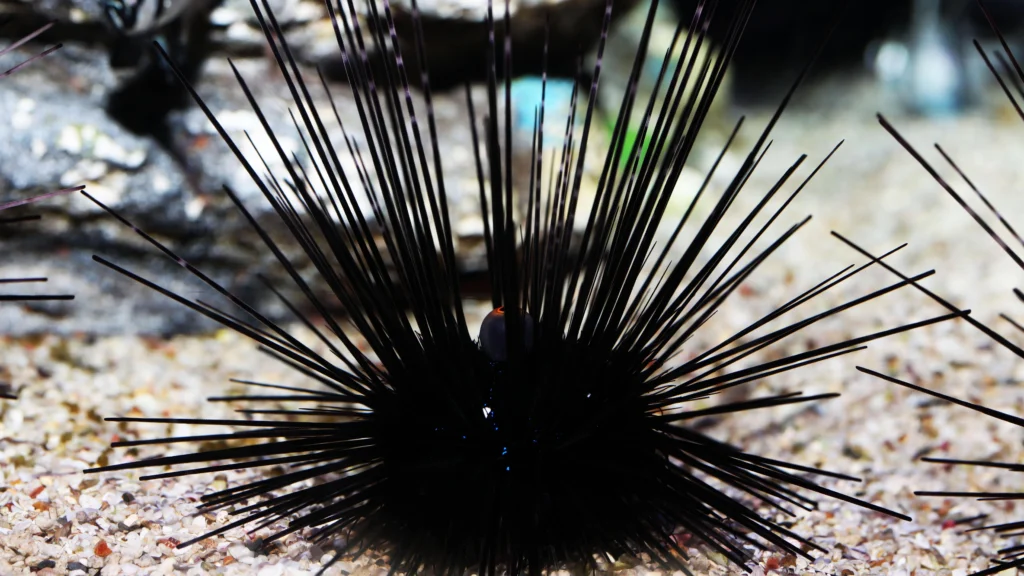These spiny, boneless Echinoderms live in all 5 oceans around the planet. They can live up to 200 years in the wild. These globular, unique creatures have hundreds of small feet. They are omnivores, venomous, and can even be food to humans. There are over 950 species of sea urchins and are some of the most diverse and versatile sea creatures. In the warm, turquoise waters of the Caribbean, these small pin cushions were once abundant; however, the 1980’s experienced a mass die-off of sea urchins, exacerbating the coral reef’s deterioration. Once again in 2022, the sea urchins faced yet another large decline, which only further contributed to the coral reef’s progressive downfall.
Parasitic Influence
Scientists are still trying to determine the underlying cause for the sea urchins’ rapid decline, but recent findings suggest evidence of a parasite called “ciliate,” which infiltrated the urchins’ bodies, eventually killing them. Researchers are still trying to uncover the root cause for the transmission of this parasite from urchin to urchin, but climate change and global warming seems to be the biggest implication.
The die off of sea urchins can be detrimental to a coral reef because their absence can lead to an unnatural and unstable rise in algae levels, which can overwhelm the reef and lead to the death of corals. The decline in corals can therefore cause the loss of many other species which depend on them for food, shelter, refuge, etc. In the 1980’s, nearly 98% of the sea urchin population was decimated in the Caribbean, but they were able to slightly recover over the next few decades.

Climate Change Related Shifts
Unfortunately, the ciliate caused yet another decline in their populations, and scientists speculate that both of the die offs were likely caused by similar parasites, probably the same ciliate. Sites across the Caribbean show sea urchins carrying the same parasite. The unhealthy urchins that became diseased showed greater amounts of the parasite compared to healthier ones. This disease and its symptoms were indicated to be universal through lab tests because healthy urchins exposed to ciliate also developed identical symptoms.
When the ciliate attacks a sea urchin, it slowly colonizes and takes over the spines, and it can eventually be found on the outer skin and then the inner body. It still isn’t clear how exactly the parasite infiltrates the urchins’ skin or enters the body. It is likely that the spines serve as enrichment sites that allow the ciliate to flourish and leach off of the creature, eventually taking over its entire body.
Ciliates are also known parasites of fish and crustaceans, but they haven’t caused mass die offs like with the sea urchins in the Caribbean. In many scenarios, they can symbiotically live with these creatures, even sea urchins, and not cause any harm or disease. However, increasing climate change may have led to unique circumstances in modes of transmission and may have caused an increased chance for disease development. For example, global warming may lead to changes in host-pathogen interactions or even decrease immunity to the disease. This can result in decreased immunity or declines in populations. This parasite coexists with other detrimental coral reef diseases, so it’s important for researchers to identify the root cause and create targeted treatments and preventative measures to help preserve the Caribbean’s habitat.
By: Harshi Pulagam




